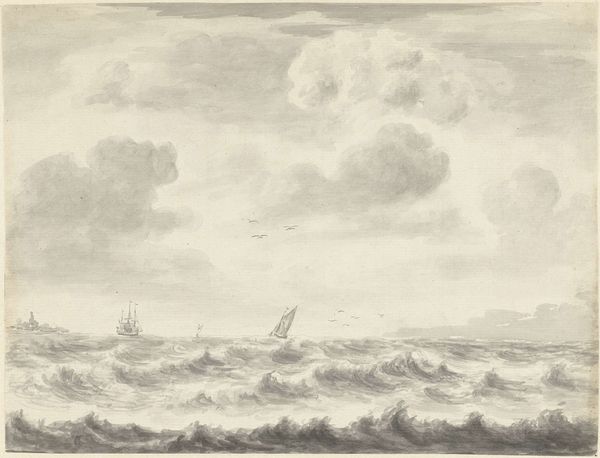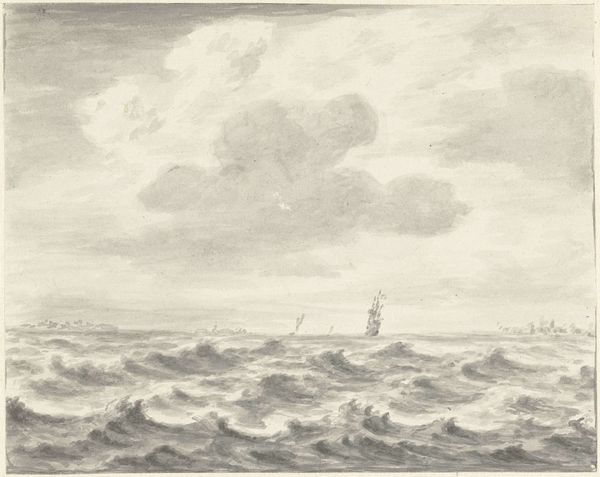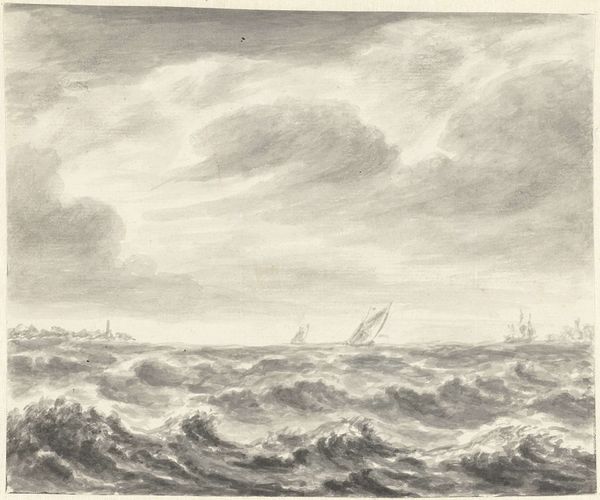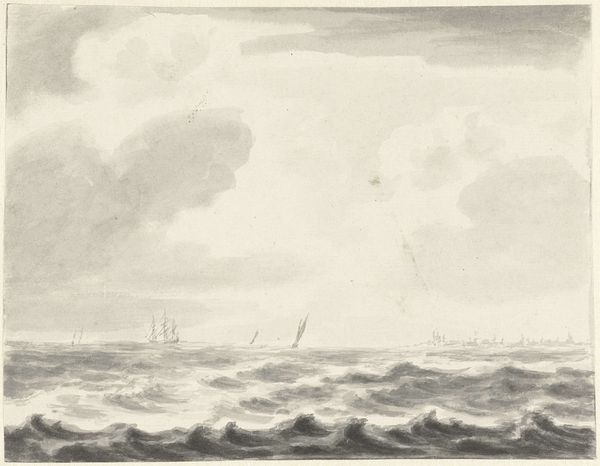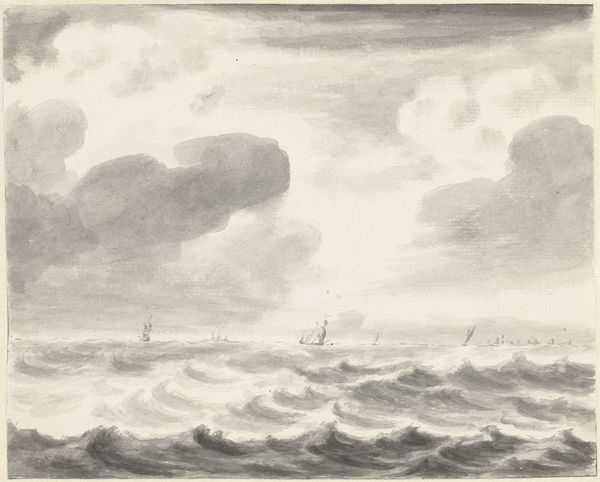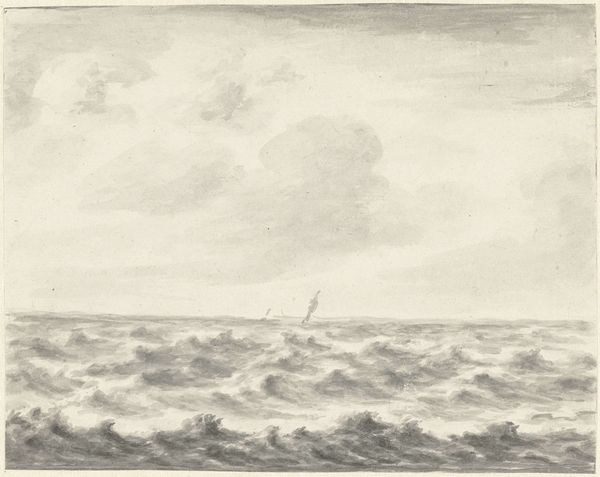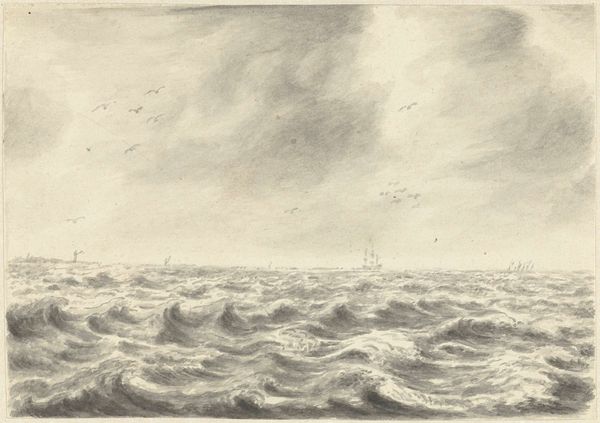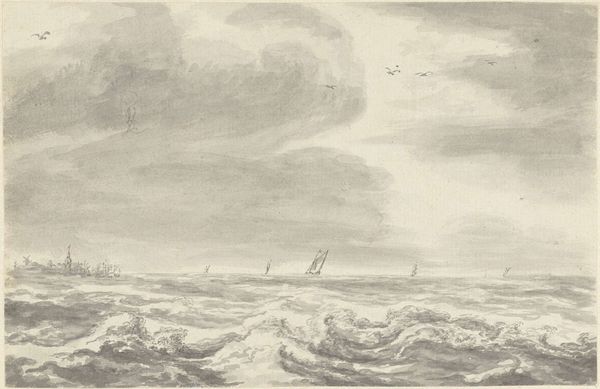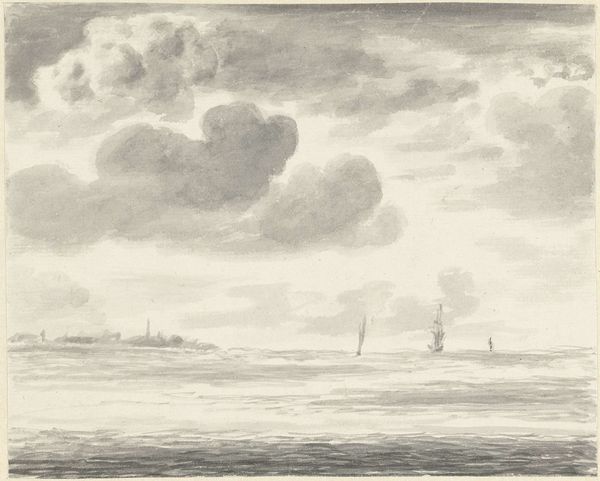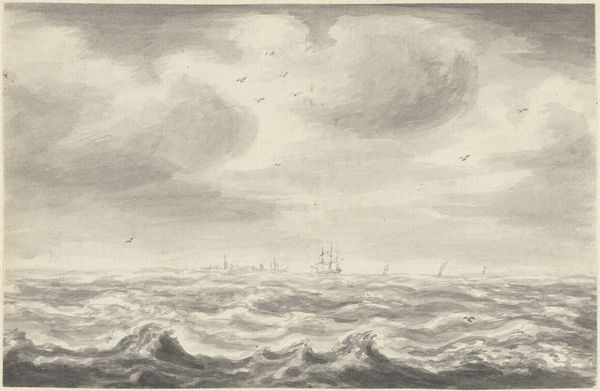
drawing, pencil
#
pencil drawn
#
drawing
#
dutch-golden-age
#
landscape
#
pencil drawing
#
pencil
#
realism
Dimensions: height 144 mm, width 182 mm
Copyright: Rijks Museum: Open Domain
Curator: This is "Zeegezicht," a pencil drawing by Pieter Idserts, made sometime between 1708 and 1781. Editor: It's turbulent! Those waves seem to come right at you, and the sky mirrors that tension with those weighty clouds. It’s powerful. Curator: I agree. And remember, this was the Dutch Golden Age; seascapes were immensely popular. They reflected the country’s maritime power and its dependence on the sea for trade and defense. Editor: Precisely! Pencil, for me, shifts the understanding. Think about where he would obtain the pencils and paper from which the art arises. Did he source this material locally? Were these materials readily available for a relatively quick, portable sketch that artists can carry and utilize outdoors or on site to capture these sketches of these scenes? Curator: That's fascinating to think about. The immediacy of the pencil also connects to its role in sketching and preparing for larger works. These seascapes celebrated Dutch power, even as they recorded the realities of a life intertwined with often dangerous seas. Editor: Dangerous indeed! Looking at the craftsmanship, note how the pencil is worked, layered, how the marks themselves shape both wave and weather—considering it’s just pencil on paper, it suggests volume. I wonder how Idserts and his peers learned such deft handling of the pencil? Did formal instruction play a role, or perhaps trade guilds controlling these drawing and sketching techniques? Curator: Both undoubtedly influenced artists like Idserts. These artworks gained considerable attention by galleries and institutions as testaments of society at large. Their techniques are rooted in a desire to capture and elevate their subject matter—not to make an economic statement regarding the materials' means of accessibility or portability. It's equally compelling and relevant. Editor: To add, it makes me reflect that it is an amazing demonstration of capturing a subject on location and, moreover, reflecting how something very easily available allows someone to convey such immense depth and motion, which otherwise may be something lost by viewers today. Curator: Exactly. “Zeegezicht” invites us to consider the intersection of artistic skill, the maritime society of the time, and even the politics embedded in representing that world. Editor: And for me, it speaks to the overlooked value of modest materials in achieving profound artistry. Pencil, paper, and a skilled hand can summon the power of the ocean.
Comments
No comments
Be the first to comment and join the conversation on the ultimate creative platform.

